Placentrex vs Alternatives Comparison Tool
Select a parameter to compare Placentrex against its alternatives:
| Attribute | Placentrex | Placenta Extract Serum | Placental Stem Cell Extract | hGH | PRP | Collagen Peptides |
|---|---|---|---|---|---|---|
| Source | Human placenta (screened) | Bovine placenta | Human placenta (stem cells) | Recombinant DNA | Autologous blood | Hydrolyzed bovine collagen |
| Delivery | Topical or injectable powder | Topical serum | Topical or injectable liquid | Subcutaneous injection | Injection into skin layers | Oral powder/capsules |
| Key Bioactives | Placental growth factor, collagen-inducing peptides, anti-inflammatory cytokines | Similar proteins, but lower concentrations due to preservative dilution | Secretome rich in exosomes & growth factors | IGF-1, GH-responsive pathways | Platelet-derived growth factor, TGF-β | Glycine, proline, hydroxyproline |
| Clinical Evidence | Small-scale Asian trials (n≈30) showing 20-30% faster wound closure | Limited peer-reviewed data; mostly anecdotal | Emerging research; pilot studies suggest improved elasticity | Extensive endocrine data; off-label skin use lacks robust trials | Multiple RCTs confirm scar reduction and skin rejuvenation | Meta-analyses show modest improvement in skin hydration |
| Typical Dosage | 0.5 g powder mixed per 5 ml sterile water, applied 2-3 times weekly | 2-3 drops daily | 0.2 ml per session, monthly | 0.1 mg daily (prescribed) | 3-5 ml per session, every 4-6 weeks | 10 g per day |
| Cost (approx.) | $150-$200 per 30-day kit | $80-$120 per bottle (30 ml) | $300-$400 per treatment series | $2,000-$3,500 per year (prescription) | $500-$700 per session | $30-$50 per month |
| Safety / Side Effects | Low; possible mild redness, rare allergic reaction | Potential irritant due to alcohol base | Still under study; theoretical immunogenic risk | Systemic effects (joint pain, edema) if misused | Transient bruising, swelling | Generally safe; rare GI upset |
Placentrex offers a balanced blend of efficacy, safety, and convenience with nitrogen-preserved human placental extract. It stands out for its high growth-factor profile at a moderate price point compared to alternatives like PRP and stem cell extracts, while being more potent than simple serums or oral supplements.
For most skin-repair goals, Placentrex provides a practical middle-ground option, especially for post-surgical wound healing or daily anti-aging routines. Always verify donor screening and follow storage guidelines to preserve potency.
When you hear the term Placentrex is a human placental extract that uses nitrogen‑preserved lyophilized powder to support skin regeneration and wound healing. The buzz around it can be overwhelming, especially when dozens of other products claim similar benefits. This guide breaks down Placentrex, explains how it works, and lines it up against the most common alternatives so you can decide which option truly fits your needs.
What Is Placentrex?
Placentrex belongs to a niche class of biologics derived from the placenta of healthy donors. The extraction process isolates proteins, growth factors, and nucleic acids, then freeze‑dries the mix with nitrogen to lock in potency. Key attributes include:
- Source: Human placenta (screened for pathogens)
- Preservation: Liquid nitrogen (‑196°C) ensures stability for up to two years
- Formulation: Powder that reconstitutes with sterile water for topical or injectable use
- Primary claims: Accelerated wound closure, skin tightening, reduction of fine lines
Manufacturers often market Placentrex as a “natural anti‑aging” solution backed by anecdotal clinical reports from dermatology clinics in Asia and Europe.
How Does the Nitrogen‑Preserved Extract Work?
Because the powder never thaws until you mix it, the bioactive molecules stay intact. When applied, Placentrex delivers a cocktail of:
- Placental growth factor - stimulates new blood vessel formation (angiogenesis)
- Collagen‑inducing peptides - trigger fibroblasts to lay down fresh collagen
- Anti‑inflammatory cytokines - calm chronic inflammation that slows healing
These components work together to reboot the skin’s repair cycle, which is why users often notice smoother texture within weeks.
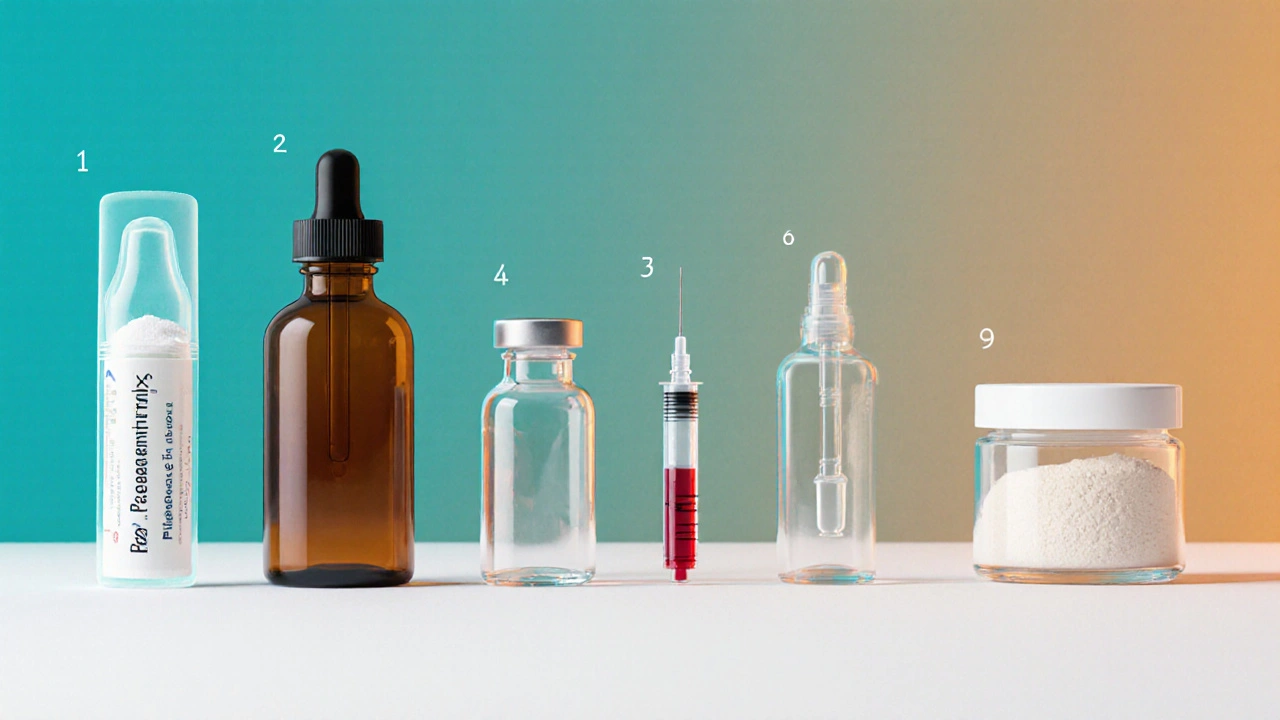
Popular Alternatives to Placentrex
Below are the most frequently compared products. Each entry includes a brief definition and its main attributes, marked up for easy reference.
- Placenta Extract Serum - a liquid serum derived from bovine placenta, usually bottled with preservatives. Claims similar anti‑aging effects but uses alcohol‑based stabilizers instead of nitrogen.
- Placental Stem Cell Extract - isolates mesenchymal stem cells from human placenta and cultures them to harvest secretomes. Marketed as a regenerative “cell‑free” therapy.
- Human Growth Hormone (hGH) - a recombinant protein injected subcutaneously to stimulate overall tissue growth, sometimes used off‑label for skin rejuvenation.
- Platelet‑Rich Plasma (PRP) - autologous blood fraction concentrated with platelets, injected to deliver the body’s own growth factors.
- Collagen Peptide Supplements - oral hydrolyzed collagen that supports skin elasticity from the inside.
Side‑by‑Side Comparison
| Attribute | Placentrex | Placenta Extract Serum | Placental Stem Cell Extract | hGH | PRP | Collagen Peptides |
|---|---|---|---|---|---|---|
| Source | Human placenta (screened) | Bovine placenta | Human placenta (stem cells) | Recombinant DNA | Autologous blood | Hydrolyzed bovine collagen |
| Delivery | Topical or injectable powder | Topical serum | Topical or injectable liquid | Subcutaneous injection | Injection into skin layers | Oral powder/capsules |
| Key Bio‑actives | Placental growth factor, collagen‑inducing peptides, anti‑inflammatory cytokines | Similar proteins, but lower concentrations due to preservative dilution | Secretome rich in exosomes & growth factors | IGF‑1, GH‑responsive pathways | Platelet‑derived growth factor, TGF‑β | Glycine, proline, hydroxyproline |
| Clinical Evidence | Small‑scale Asian trials (n≈30) showing 20‑30% faster wound closure | Limited peer‑reviewed data; mostly anecdotal | Emerging research; pilot studies suggest improved elasticity | Extensive endocrine data; off‑label skin use lacks robust trials | Multiple RCTs confirm scar reduction and skin rejuvenation | Meta‑analyses show modest improvement in skin hydration |
| Typical Dosage | 0.5g powder mixed per 5ml sterile water, applied 2‑3times weekly | 2‑3drops daily | 0.2ml per session, monthly | 0.1mg daily (prescribed) | 3‑5ml per session, every 4‑6weeks | 10g per day |
| Cost (approx.) | $150‑$200 per 30‑day kit | $80‑$120 per bottle (30ml) | $300‑$400 per treatment series | $2,000‑$3,500 per year (prescription) | $500‑$700 per session | $30‑$50 per month |
| Safety / Side Effects | Low; possible mild redness, rare allergic reaction | Potential irritant due to alcohol base | Still under study; theoretical immunogenic risk | Systemic effects (joint pain, edema) if misused | Transient bruising, swelling | Generally safe; rare GI upset |
Which Option Is Right for You?
Think of the choice as matching a tool to a job. Here are some quick scenarios:
- Post‑surgical wound healing - Placentrex or PRP typically outperform oral supplements. If you need a cost‑effective, non‑invasive route, the nitrogen‑preserved powder is a solid pick.
- Daily anti‑aging routine - Collagen peptides and Placenta Extract Serum can be easily incorporated into a morning regimen, though the results are subtler.
- Severe skin laxity or deep scars - Placental Stem Cell Extract or PRP give the highest concentration of growth factors, but they cost more and require clinic visits.
- Systemic rejuvenation - hGH may deliver overall tissue growth, but the risk profile is steep and it’s a prescription‑only therapy.
In practice, many dermatologists start patients with Placentrex because it blends potency (thanks to nitrogen preservation) with a relatively low side‑effect risk.

Common Pitfalls & How to Avoid Them
Even a great product can fall short if you overlook a few details:
- Storage mistakes - Keep the reconstituted solution refrigerated and use within 48hours. Failure to do so degrades the growth factors.
- Skipping screening - Only use Placentrex from reputable manufacturers who test donors for HIV, Hepatitis B/C, and syphilis. Unscreened extracts can transmit infections.
- Over‑application - More isn’t always better. Excessive dosing can cause irritation and may actually slow healing.
- Ignoring contraindications - People with autoimmune disorders or severe eczema should consult a dermatologist before starting any placental product.
- Choosing based solely on price - Cheaper serums often replace the nitrogen‑preserved matrix with alcohol, which can compromise efficacy.
Address these points early, and you’ll get the most out of your chosen treatment.
Quick Takeaways
- Placentrex uses nitrogen‑preserved human placental extract, offering a high‑growth‑factor profile at a moderate price.
- Alternatives vary widely: serums are convenient but less potent; stem‑cell extracts and PRP deliver stronger regeneration at higher costs.
- For most skin‑repair goals, Placentrex provides a balanced blend of efficacy, safety, and convenience.
- Always verify donor screening and follow storage guidelines to preserve potency.
- Match the product to the specific issue-wound healing, anti‑aging, or deep scar reduction-for best results.
Frequently Asked Questions
Is Placentrex safe for home use?
Yes, provided you purchase from a certified supplier that screens donors and you follow the recommended reconstitution and storage steps. Most users experience only mild redness.
How does Placentrex differ from regular placenta serum?
The key difference is the nitrogen‑preserved lyophilized format, which locks in bio‑active proteins. Regular serums rely on preservatives that can degrade growth factors over time.
Can I combine Placentrex with PRP?
Some clinics layer both treatments for synergistic effect, but you should space them out by at least one week to avoid overstimulating the skin.
What is the typical treatment timeline?
Most patients notice smoother texture after 4‑6 weeks of twice‑weekly applications. Full results for deep scar reduction can take 3‑6 months.
Are there any groups who should avoid Placentrex?
Pregnant or nursing women, people with known placental allergies, and those with severe autoimmune conditions should consult a healthcare professional before use.
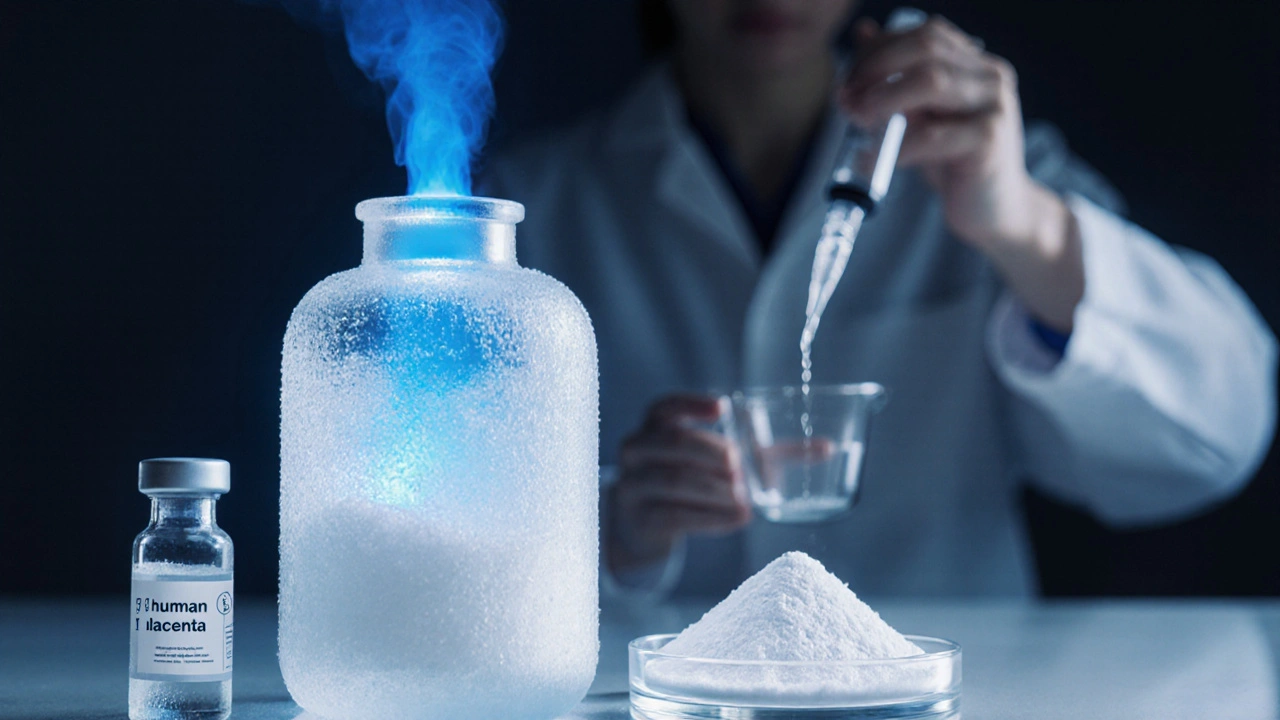
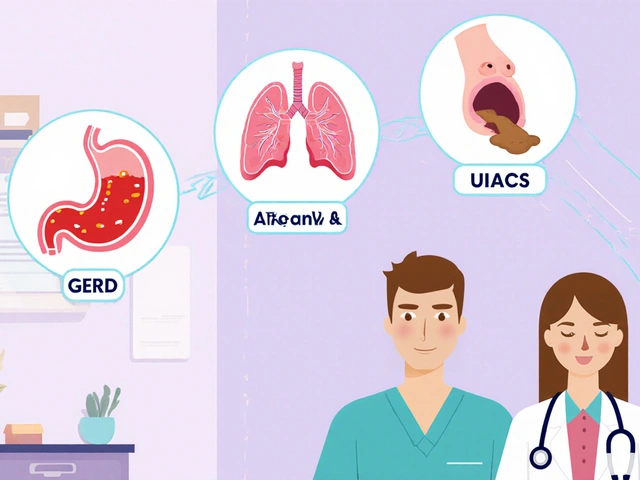


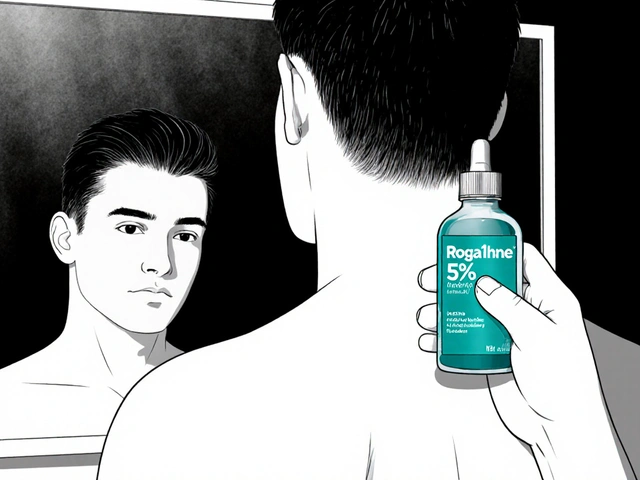
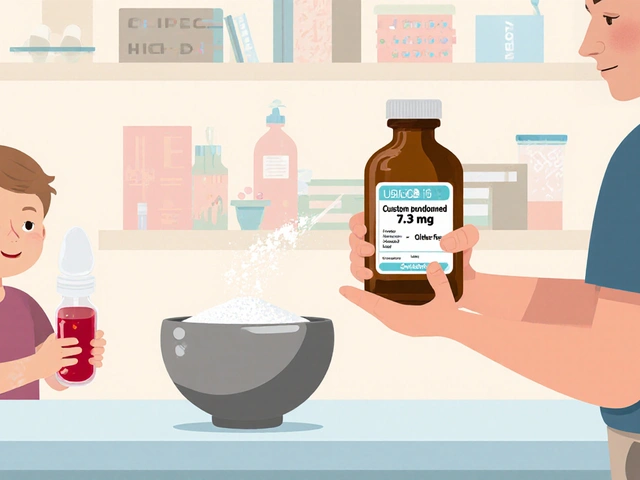

Having looked at the comparison, I can see why Placentrex appeals to many users. Its nitrogen‑preserved format does preserve a lot of bio‑actives, which is a clear advantage over alcohol‑based serums. If you’re after a balanced approach between efficacy and safety, this option is worth a trial.
From a moral standpoint, the proliferation of unregulated placental extracts raises serious ethical questions. 🌱 The fact that human tissue is harvested, even when screened, should make every consumer pause and consider consent. Moreover, the marketing often glosses over donor anonymity, which is a cornerstone of ethical bioproducts. It’s troubling that many clinics present these treatments as miracle cures without robust data. The small‑scale Asian trials cited are nowhere near the statistical power needed for reliable conclusions. Also, the cost differential encourages a socioeconomic divide, where only those who can afford $200 per month get access to potentially superior care. 🧐 The reliance on nitrogen preservation sounds high‑tech, but the underlying process is still a form of commodifying human biology. One must ask whether the profit motive overrides patient safety in the long run. The occasional mild redness reported is benign, yet a rare allergic reaction could signal deeper immunogenic issues. In the realm of dermatology, we already have proven treatments like PRP that don’t involve cross‑species donations. Even the bovine placenta serum, though less potent, sidesteps many of the human‑donor concerns. The comparison table does a decent job, but it lacks discussion on long‑term outcomes, which are essential for any regenerative therapy. The convenience of a powder mix is appealing, yet the necessity of sterile reconstitution adds a layer of complexity that may deter home users. Ultimately, the hype surrounding Placentrex should be tempered with a healthy dose of skepticism. 🌐 Consumers deserve full transparency about sourcing, processing, and potential hidden risks before making a financial commitment.
The discourse surrounding Placentrex necessitates a lexicon imbued with pharmacodynamic nuance. Its bio‑matrix, replete with growth factor isoforms, ostensibly supersedes rudimentary serological adjuncts. Nonetheless, the paucity of double‑blind, multicentric trials engenders a methodological lacuna. Ergo, the purported superiority remains speculative pending rigorous epistemic validation.
Imagine the skin as a philosophical canvas where each molecule paints a thoughtless brushstroke the essence of healing emerges when the placenta's secretome whispers to dormant fibroblasts it reminds us that biology is a dialogue not a monologue we must listen carefully to these subtle cues and trust the process
Mate, Placentrex looks fancy but it’s just a pricey powder you mix at home. Gonna be a pain keepin’ it cold an’ all. If you want results, better to try PRP or just stick with good ol’ moisturizin’ stuff.
There's a hidden agenda behind these placental products, and it's not just about skin health. The elite biotech labs are using them to insert micro‑doses of nano‑vectors that could alter our gene expression without us knowing. While they claim safety, the lack of long‑term studies is suspicious. It's a classic case of a glittering front hiding a deeper surveillance mechanism.
Hey folks, if you’re on a budget but still want something that actually works, give Placentrex a shot – it’s not as wild as hGH and cheaper than PRP. The growth factors are legit, and you’ll see smoother skin in a few weeks. Keep at it consistently, and you’ll thank yourself later.
This practice is ethically unacceptable.